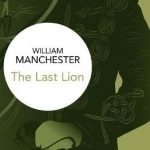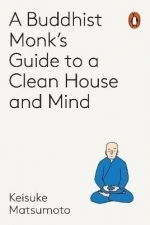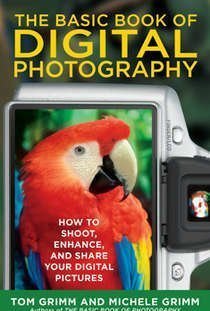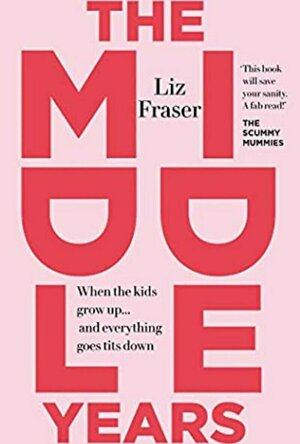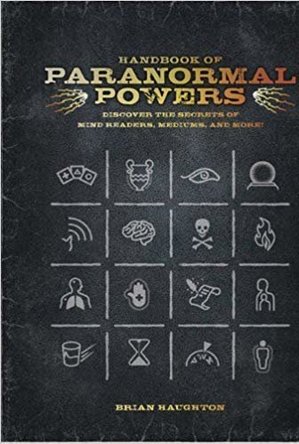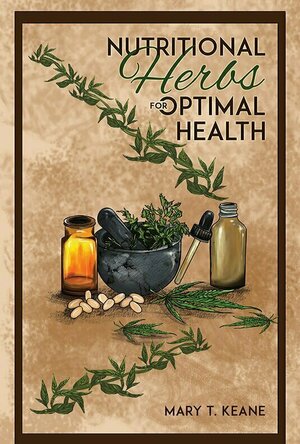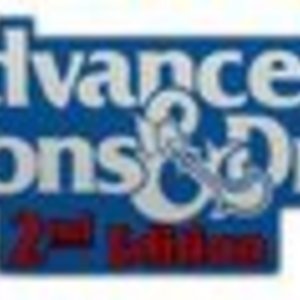Search
Search results
John Lithgow recommended The Last Lion: Winston Spencer Churchill: Visions of Glory, 1874-1932 in Books (curated)
Haley Mathiot (9 KP) rated The Breakout Novelist: Craft and Strategies for Career Fiction Writers in Books
Apr 27, 2018
Rating: 4.5
The Breakout Novelist is a fantastic handbook that should be on every writer's desk. It should be marked up, highlighted, paper-clipped, and sticky-noted (if that's a word. Let's pretend it is). There is so much great advice and information in here it would take weeks and multiple readings to really get it all: but it's not meant to be read through from start to finish. It's a handbook, workbook, dictionary type tool.
There are many categories such as plot, theme, characters, chapters on voice and hyper-reality, protagonists vs. heroes, and information about what to do when you've got your manuscript done and "ready." There are exercises questions, prompts, and examples carefully explained and outlined. It's easy to read and understand and doesn't feel like an instruction manual: it's fun and enjoyable and interesting to read.
I wholeheartedly recommend any serious writer—just starting or multi-published—to grab a copy of The Breakout Novelist.
check out my blog for an excerpt/guest post: http://haleymathiot.blogspot.com/2011/04/review-and-guest-post-breakout-novelist.html
The Breakout Novelist is a fantastic handbook that should be on every writer's desk. It should be marked up, highlighted, paper-clipped, and sticky-noted (if that's a word. Let's pretend it is). There is so much great advice and information in here it would take weeks and multiple readings to really get it all: but it's not meant to be read through from start to finish. It's a handbook, workbook, dictionary type tool.
There are many categories such as plot, theme, characters, chapters on voice and hyper-reality, protagonists vs. heroes, and information about what to do when you've got your manuscript done and "ready." There are exercises questions, prompts, and examples carefully explained and outlined. It's easy to read and understand and doesn't feel like an instruction manual: it's fun and enjoyable and interesting to read.
I wholeheartedly recommend any serious writer—just starting or multi-published—to grab a copy of The Breakout Novelist.
check out my blog for an excerpt/guest post: http://haleymathiot.blogspot.com/2011/04/review-and-guest-post-breakout-novelist.html
Rachel King (13 KP) rated Ryken's Bible Handbook in Books
Feb 11, 2019
I had trouble deciding how to review this book, since it's not necessarily meant to be read cover-to-cover, but used alongside the Bible as a study guide. Flipping through the pages, it's apparent that nearly every aspect that I can think of regarding the Bible is addressed in the text, such as format, author, audience, theme, writing style, timeline, purpose, cast of characters, both general and specific topics highlighted in the Bible, flow, places, definitions, historical references, and even tips for reading and studying the Bible. Each book is addressed separately, quotes from other sources are scattered across the pages, and interesting factoids are made mention of in the margins. A One Year Bible Reading Plan is also found at the end of the handbook, followed by multiple maps and charts that correspond to information addressed in the handbook.
It is important to note that the Bible version that the writers use when quoting scripture is the English Standard Version (ESV), which I think is poor form. Bible versions now adays are a dime-a-dozen, and everyone thinks that their version is the best and easiest to understand. If a person is going to put out something of this nature, that claims a certain authority in the interpretation of Biblical scripture, they should either be willing to use a wide variety of Bible versions or stick with the version that servived centuries before this modern era of multiple Bible versions - the King James Version (KJV). Bible versions is a hot topic, so I'm not going to dwell on this.
I have been studying the Bible for most of my life, so anything that puts a fresh perspective on the text, I appreciate. I especially like the quotes and fact tidbits, since these are things that I won't get from the Bible alone. I will definitely be using this handbook alongside my Bible reading and study, as well as taking advantage of the One Year Bible Reading Plan, though I won't consider this my only source of Bible reference.
It is important to note that the Bible version that the writers use when quoting scripture is the English Standard Version (ESV), which I think is poor form. Bible versions now adays are a dime-a-dozen, and everyone thinks that their version is the best and easiest to understand. If a person is going to put out something of this nature, that claims a certain authority in the interpretation of Biblical scripture, they should either be willing to use a wide variety of Bible versions or stick with the version that servived centuries before this modern era of multiple Bible versions - the King James Version (KJV). Bible versions is a hot topic, so I'm not going to dwell on this.
I have been studying the Bible for most of my life, so anything that puts a fresh perspective on the text, I appreciate. I especially like the quotes and fact tidbits, since these are things that I won't get from the Bible alone. I will definitely be using this handbook alongside my Bible reading and study, as well as taking advantage of the One Year Bible Reading Plan, though I won't consider this my only source of Bible reference.
Suswatibasu (1703 KP) rated A Monk's Guide to a Clean House and Mind in Books
Jan 21, 2018
Sweet read but not for everyone
A Monk's Guide to a Clean House and Mind is literally a cleaning manual for those who follow spirituality as part of their general course. Shoukei Matsumoto, a Japanese Zen Buddhist monk, has created a simple guide for those who want to be mindful about their daily chores and why monks themselves do each task with such vigour and importance.
While the book itself is sweet, with lovely picture representations, I did feel that some of it may not apply to a secular western household as they speak of how to repair an altar. And when you live by yourself, sharing chores is not really an option. With that in mind, the book is geared for a certain audience, many of which may have to read this as just a pleasant handbook.
While the book itself is sweet, with lovely picture representations, I did feel that some of it may not apply to a secular western household as they speak of how to repair an altar. And when you live by yourself, sharing chores is not really an option. With that in mind, the book is geared for a certain audience, many of which may have to read this as just a pleasant handbook.
The Basic Book of Digital Photography by Tom and Michele Grimm
Genre: Educational, Artistic
Rating: 4.5/5
Tom and Michele Grimm have compiled a magnificent handbook for any photographer, beginner or otherwise. This book has everything in it—from how to pick the best camera for you, to when and where to shoot, to editing, to timing… the list goes on and on.
The book is packed with photos, both color and black and white, examples, footnotes, and easy to read and understand text. At first glance it may seem intimidating, but it is so incredibly reader friendly that it’s suitable for almost any age.
The only thing about this book that I didn’t like was that there were only some pictures that were color, and most of them were black and white.
Recommendation: Ages 10+ to anyone interested in digital photography, whether they have been snapping photos for years or whether they’ve never even picked up a digital camera.
**Thank you to FSB Associates for providing my review copy!**
Genre: Educational, Artistic
Rating: 4.5/5
Tom and Michele Grimm have compiled a magnificent handbook for any photographer, beginner or otherwise. This book has everything in it—from how to pick the best camera for you, to when and where to shoot, to editing, to timing… the list goes on and on.
The book is packed with photos, both color and black and white, examples, footnotes, and easy to read and understand text. At first glance it may seem intimidating, but it is so incredibly reader friendly that it’s suitable for almost any age.
The only thing about this book that I didn’t like was that there were only some pictures that were color, and most of them were black and white.
Recommendation: Ages 10+ to anyone interested in digital photography, whether they have been snapping photos for years or whether they’ve never even picked up a digital camera.
**Thank you to FSB Associates for providing my review copy!**
ClareR (5906 KP) rated The Middle Years in Books
Apr 17, 2020
The Middle Years is a handbook to surviving life as the parent of teenagers. The first half of the book is funny and engaging, telling it how it really is (hormones etc) to be the parent to preteens and teens, and I really enjoyed it. It was lighthearted, and more serious where it needed to be.
However in the second half of the book, it takes a darker turn, and talks about the authors divorce, mental health issues, guilt of divorcing and the effects this hound have had on her children. To be honest, if I’d known it was going to take this turn, there’s a high possibility that I wouldn’t have read it at all. I’ve had enough personal experience of parents divorcing to last me a lifetime without reading about it. It just seemed very bitter.
I DID enjoy the first half though, which is why I’ve given it a 3/5 (or 6/10, however you want to look at it!).
Many thanks to The Pigeonhole for the opportunity to read this book.
However in the second half of the book, it takes a darker turn, and talks about the authors divorce, mental health issues, guilt of divorcing and the effects this hound have had on her children. To be honest, if I’d known it was going to take this turn, there’s a high possibility that I wouldn’t have read it at all. I’ve had enough personal experience of parents divorcing to last me a lifetime without reading about it. It just seemed very bitter.
I DID enjoy the first half though, which is why I’ve given it a 3/5 (or 6/10, however you want to look at it!).
Many thanks to The Pigeonhole for the opportunity to read this book.
Hadley (567 KP) rated Handbook of Paranormal Powers in Books
Jun 2, 2019
I have always believed in the paranormal, but I am careful not to take everything at face value. When I picked up this book, I unfortunately took it at its face value, thinking that it was about how people developed these paranormal abilities and the things that they achieved with them.
But this book seems to have been written by a skeptic that disguised it as a book from a believer in the paranormal, which to say is a pretty clever way to sell a book when the belief in the paranormal is at an all time high. The author spends much of the book detailing people who have exhibited paranormal abilities just to quickly tear them down. I will say that Brian Haughton did a wonderful job on researching for this book, bringing up not only the history of paranormal abilities, but also self proclaimed psychics that readers may not have even heard of, such as Florence Cook, who had her abilities tested by none other than William Crookes( the discoverer of the element thallium).
Haughton's 'Handbook of Paranormal Powers' should have been titled something else, mostly because it's a history lesson in ESP and also, obviously, from the point-of-view of a skeptic. Yet, it doesn't lack for reading by believers; one such part I found interesting was a part on dowsing- the supernatural ability to find hidden objects, substances, geographic features, or sometimes even people- which you may have seen someone doing by holding two rods to find underground water. This part was about when dowsing became popular in the seventeenth-century France, and was being considered 'evil': ". . .with the dowser Baroness de Beausoleil and her husband, a mining expert, journeying across Europe and allegedly locating ore deposits of iron, gold, and silver. The couple established a thriving mineral company, but when their methods of locating metal ores became known they were accused of practicing the 'black arts' and imprisoned for the rest of their lives. " Readers learn that it wasn't until the nineteenth century, with the rise of spiritualism, that dowsing was no longer considered 'evil.'
Another one that interested me concerned the comedian Andy Kaufman, and his pursuit to rid himself of a rare lung cancer with psychic healing: "In March 1984, US comedian Andy Kaufman traveled to the Philippines for a six- week course of psychic surgery after being diagnosed with a rare lung cancer. The surgeon, Jun Labo, performed the operation, and claimed that he had removed large cancerous tumors from Kaufman's body. On May 16, 1984, Kaufman died from renal failure as a consequence of a metastatic lung cancer. "
I hate, but also love this book, not because Haughton backs up all of the skeptic claims with scientific research and tests, but because he claimed this to be a handbook or paranormal powers. If you glance at the cover, just below the title is: 'discover the secrets of mind readers, mediums, and more' - this can be taken that it's written by someone who believes in the paranormal, as well as someone who may have had personal experiences with the unknown, but with that said, I did learn a lot about the history of paranormal powers as well as people I had never heard of.
To prove the skepticism in Haughton's writing, we can turn to page 173, where he writes about how to test whether or not a self-proclaimed psychic surgeon is real. But even before this page and throughout this book, Haughton explains someone doing an extraordinary thing only to quickly explain away why it was fake to begin with. The 'Handbook of Paranormal Powers' reads a lot like a college thesis, that I found myself getting bored with the matter-of-fact tone. Some readers may enjoy reading essay-type books, but for me, it becomes repetitive enough that I don't remember much of the information I had just read.
Also, readers may come away with the feeling that Haughton doesn't care about the slight chance that some paranormal powers may be real, but instead he'd rather read about the scientific facts. I would only recommend this book to people who want to do a light reading on paranormal history, meaning mostly what made headlines in the news. For believers, I would suggest you go elsewhere.
But this book seems to have been written by a skeptic that disguised it as a book from a believer in the paranormal, which to say is a pretty clever way to sell a book when the belief in the paranormal is at an all time high. The author spends much of the book detailing people who have exhibited paranormal abilities just to quickly tear them down. I will say that Brian Haughton did a wonderful job on researching for this book, bringing up not only the history of paranormal abilities, but also self proclaimed psychics that readers may not have even heard of, such as Florence Cook, who had her abilities tested by none other than William Crookes( the discoverer of the element thallium).
Haughton's 'Handbook of Paranormal Powers' should have been titled something else, mostly because it's a history lesson in ESP and also, obviously, from the point-of-view of a skeptic. Yet, it doesn't lack for reading by believers; one such part I found interesting was a part on dowsing- the supernatural ability to find hidden objects, substances, geographic features, or sometimes even people- which you may have seen someone doing by holding two rods to find underground water. This part was about when dowsing became popular in the seventeenth-century France, and was being considered 'evil': ". . .with the dowser Baroness de Beausoleil and her husband, a mining expert, journeying across Europe and allegedly locating ore deposits of iron, gold, and silver. The couple established a thriving mineral company, but when their methods of locating metal ores became known they were accused of practicing the 'black arts' and imprisoned for the rest of their lives. " Readers learn that it wasn't until the nineteenth century, with the rise of spiritualism, that dowsing was no longer considered 'evil.'
Another one that interested me concerned the comedian Andy Kaufman, and his pursuit to rid himself of a rare lung cancer with psychic healing: "In March 1984, US comedian Andy Kaufman traveled to the Philippines for a six- week course of psychic surgery after being diagnosed with a rare lung cancer. The surgeon, Jun Labo, performed the operation, and claimed that he had removed large cancerous tumors from Kaufman's body. On May 16, 1984, Kaufman died from renal failure as a consequence of a metastatic lung cancer. "
I hate, but also love this book, not because Haughton backs up all of the skeptic claims with scientific research and tests, but because he claimed this to be a handbook or paranormal powers. If you glance at the cover, just below the title is: 'discover the secrets of mind readers, mediums, and more' - this can be taken that it's written by someone who believes in the paranormal, as well as someone who may have had personal experiences with the unknown, but with that said, I did learn a lot about the history of paranormal powers as well as people I had never heard of.
To prove the skepticism in Haughton's writing, we can turn to page 173, where he writes about how to test whether or not a self-proclaimed psychic surgeon is real. But even before this page and throughout this book, Haughton explains someone doing an extraordinary thing only to quickly explain away why it was fake to begin with. The 'Handbook of Paranormal Powers' reads a lot like a college thesis, that I found myself getting bored with the matter-of-fact tone. Some readers may enjoy reading essay-type books, but for me, it becomes repetitive enough that I don't remember much of the information I had just read.
Also, readers may come away with the feeling that Haughton doesn't care about the slight chance that some paranormal powers may be real, but instead he'd rather read about the scientific facts. I would only recommend this book to people who want to do a light reading on paranormal history, meaning mostly what made headlines in the news. For believers, I would suggest you go elsewhere.
Night Reader Reviews (683 KP) rated Nutritional Herbs for Optimal Health in Books
Feb 4, 2020
Honest Review for Free Copy of Book
Nutritional Herbs for Optimal Health by Mary T. Keane is an extremely short handbook detailing a select few herbs and their usefulness for nutrition and health. Though the serious herbalist will want a bigger, more detailed guide this is a nice quick reference or introductory book for the beginner.
Herbs have been used for centuries for their medicinal and nutritional properties. In fact they were the first form of medicine we had long before our current manufactured medicine became a thing. This book details the way some herbs used to be used before modern medicine took over and how they may still be used today. It also covers some of the illnesses people of today face and the deficiencies that cause them. It explains why and how specific herbs can help with some of these illnesses.
While the book has a large focus on Nettles (yes that stinging plant that many outdoors families were taught to avoid, at least where I live) for arthritis and kelp for the heart and thyroid other useful plants were mentioned. Comfrey will be a herb that many readers will want to keep on hand after learning about how it can speed up healing wounds significantly. Those prone to nausea will learn to keep Dandelion on hand and some Yaroow for toothaches and those hemorrhoids no one ever want to talk about. Don’t know how to properly use, prepare, or administer these herbs? Don’t worry all that is covered as well.
I really enjoyed how the author went into the historic uses of some of the herbs mentioned. It was especially interesting to learn how Stinging Nettle would directly be hit on the skin of a person suffering from Arthritis to increase circulation in order to reduce pain. I was disapointed that there was not a larger range of herbs mentioned. The book only talks about around twenty-three herbs total and some of those only got one short paragraph. Alos out of those few herbs mentioned only and a handful have pictures with them. Finally, my last complaint is that it talks about specific mineral or element deficiencies that can be treated with herbs more than the herbs themselves.
To be completely honest the only people who are going to really enjoy this book are health-conscious adults. This is largely because of the informative topic and the fact that this book is more of a handbook or guide. I rate this book 2 out of 4. While I did enjoy the information in this book it felt like there wasn’t that much offered. The lack of images and diversity of the herbs mentioned was a real let-down from me. Between that and the author frequently referring to or mentioning other books she wrote this book felt more like a teaser or sample and not the full thing.
https://nightreaderreviews.blogspot.com
https://facebook.com/nightreaderreviews
Herbs have been used for centuries for their medicinal and nutritional properties. In fact they were the first form of medicine we had long before our current manufactured medicine became a thing. This book details the way some herbs used to be used before modern medicine took over and how they may still be used today. It also covers some of the illnesses people of today face and the deficiencies that cause them. It explains why and how specific herbs can help with some of these illnesses.
While the book has a large focus on Nettles (yes that stinging plant that many outdoors families were taught to avoid, at least where I live) for arthritis and kelp for the heart and thyroid other useful plants were mentioned. Comfrey will be a herb that many readers will want to keep on hand after learning about how it can speed up healing wounds significantly. Those prone to nausea will learn to keep Dandelion on hand and some Yaroow for toothaches and those hemorrhoids no one ever want to talk about. Don’t know how to properly use, prepare, or administer these herbs? Don’t worry all that is covered as well.
I really enjoyed how the author went into the historic uses of some of the herbs mentioned. It was especially interesting to learn how Stinging Nettle would directly be hit on the skin of a person suffering from Arthritis to increase circulation in order to reduce pain. I was disapointed that there was not a larger range of herbs mentioned. The book only talks about around twenty-three herbs total and some of those only got one short paragraph. Alos out of those few herbs mentioned only and a handful have pictures with them. Finally, my last complaint is that it talks about specific mineral or element deficiencies that can be treated with herbs more than the herbs themselves.
To be completely honest the only people who are going to really enjoy this book are health-conscious adults. This is largely because of the informative topic and the fact that this book is more of a handbook or guide. I rate this book 2 out of 4. While I did enjoy the information in this book it felt like there wasn’t that much offered. The lack of images and diversity of the herbs mentioned was a real let-down from me. Between that and the author frequently referring to or mentioning other books she wrote this book felt more like a teaser or sample and not the full thing.
https://nightreaderreviews.blogspot.com
https://facebook.com/nightreaderreviews
Peter Shephard (2822 KP) rated Advanced Dungeons & Dragons (2nd Edition) in Tabletop Games
Jun 4, 2019
Classic, awesome, brilliant RPG system
Where can I start with 2nd Edition....
For about 10-15 years, 2nd edition D&D was THE game for role playing. For many thousands of people, it is still THE game for role playing.
Dont get me wrong, there are some elements which can seem counter-intuitive; the best armour class is a negative value (so, a normal person standing in normal clothes is AC 10. A fully plate-armoured knight, with a shield, is AC1, but may be 0 or a negative value). But, when you look at the wider picture, it starts to make sense - the main attack measure is THAC0 (To Hit Armour Class 0) and starts at 20, and drops at a varying rate depending on the class. So a level 1 fighter would need to roll a 10 to hit the person mentioned earlier (AC10). To hit the knight, at AC1, the fighter would need to roll a 19.
2nd Ed, for me, is the last D&D which doesnt have a computer game feel. The Proficiency system, which is optional, is one of my favourite bits - it acknowledges that people (even heroes) aren't going to be skilled at everything, and even something mundane like reading would not be necessarily be a common skill.
The plethora of resources available for 2nd Ed is amazing; from the jungles of Chult, to the sprawling Sword Coast, to the stars with Spelljammer, to a homebrew campaign - all you need are three books; the Players Handbook, the DM guide, and the Monstrous Manual, and even that is optional. It is totally possible to play an absence-of-magic settling, and have all players and enemies being humans, or all dwarves, or anything else.
I have heard people say that the latest edition (5th) is all the best bits from 2nd, 3.5, and 4th, but from what I have seen, it might shine a candle to 2nd ed, but it will not claim the crown.
For about 10-15 years, 2nd edition D&D was THE game for role playing. For many thousands of people, it is still THE game for role playing.
Dont get me wrong, there are some elements which can seem counter-intuitive; the best armour class is a negative value (so, a normal person standing in normal clothes is AC 10. A fully plate-armoured knight, with a shield, is AC1, but may be 0 or a negative value). But, when you look at the wider picture, it starts to make sense - the main attack measure is THAC0 (To Hit Armour Class 0) and starts at 20, and drops at a varying rate depending on the class. So a level 1 fighter would need to roll a 10 to hit the person mentioned earlier (AC10). To hit the knight, at AC1, the fighter would need to roll a 19.
2nd Ed, for me, is the last D&D which doesnt have a computer game feel. The Proficiency system, which is optional, is one of my favourite bits - it acknowledges that people (even heroes) aren't going to be skilled at everything, and even something mundane like reading would not be necessarily be a common skill.
The plethora of resources available for 2nd Ed is amazing; from the jungles of Chult, to the sprawling Sword Coast, to the stars with Spelljammer, to a homebrew campaign - all you need are three books; the Players Handbook, the DM guide, and the Monstrous Manual, and even that is optional. It is totally possible to play an absence-of-magic settling, and have all players and enemies being humans, or all dwarves, or anything else.
I have heard people say that the latest edition (5th) is all the best bits from 2nd, 3.5, and 4th, but from what I have seen, it might shine a candle to 2nd ed, but it will not claim the crown.
Haley Mathiot (9 KP) rated The SuperStress Solution: 4-week Diet and Lifestyle Program in Books
Apr 27, 2018
4.5/5
Roberta Lee has put a name to the layers upon layers of stress that eventually break down our bodies and ruin our lives—it’s called SuperStress. She tells of the physical and mental affects that this SuperStress has on us. She also gives us ways to fix it—without drugs.
This handbook is holistic. Therapy means physical therapy, exercise, meditation and breathing control. Prescriptions means herbs and health foods and vitamins. Lee is not taking away the symptoms of stress-related bad health—she’s fixing the problem behind it.
The program outlined in this book is one you can follow with or without a doctor helping you along. She gives physical exercises and stretches that you can do, a two-week food plan to get you going on a better diet, journaling prompts to learn how to release your stress in words, and lots of other things.
I would recommend reading two parts of the book at once: Read through the first half, a little bit at a time, and learn about the science behind our stress, at the same time follow the program outlined in the back of the book. This way you’re reading and changing your lifestyle at the same time.
The only reason I don’t give it a 5/5 is because some of the meditation aspects in this book are self-centered, and by that I don’t mean prideful and greedy, I mean self-focused. I have learned that focusing on self will not release any stress, it will only pile on more. The only true way to release everything mentally is to lean on Christ. The journaling prompts in the book are in line with that, but some of the affirmations that are to be recited while meditating are so self-centered that I cannot see how any relief would come of it. That is coming from me as a Christian.
The SuperStress Solution is a fantastic book for people who are in heavy stress and need a way out without the use of drugs or extensive therapy. Recommended for ages 16+.
Roberta Lee has put a name to the layers upon layers of stress that eventually break down our bodies and ruin our lives—it’s called SuperStress. She tells of the physical and mental affects that this SuperStress has on us. She also gives us ways to fix it—without drugs.
This handbook is holistic. Therapy means physical therapy, exercise, meditation and breathing control. Prescriptions means herbs and health foods and vitamins. Lee is not taking away the symptoms of stress-related bad health—she’s fixing the problem behind it.
The program outlined in this book is one you can follow with or without a doctor helping you along. She gives physical exercises and stretches that you can do, a two-week food plan to get you going on a better diet, journaling prompts to learn how to release your stress in words, and lots of other things.
I would recommend reading two parts of the book at once: Read through the first half, a little bit at a time, and learn about the science behind our stress, at the same time follow the program outlined in the back of the book. This way you’re reading and changing your lifestyle at the same time.
The only reason I don’t give it a 5/5 is because some of the meditation aspects in this book are self-centered, and by that I don’t mean prideful and greedy, I mean self-focused. I have learned that focusing on self will not release any stress, it will only pile on more. The only true way to release everything mentally is to lean on Christ. The journaling prompts in the book are in line with that, but some of the affirmations that are to be recited while meditating are so self-centered that I cannot see how any relief would come of it. That is coming from me as a Christian.
The SuperStress Solution is a fantastic book for people who are in heavy stress and need a way out without the use of drugs or extensive therapy. Recommended for ages 16+.
